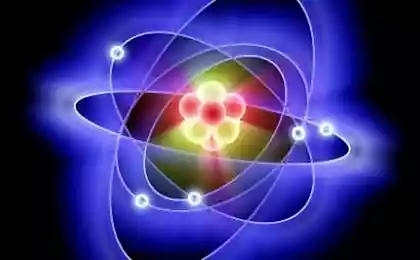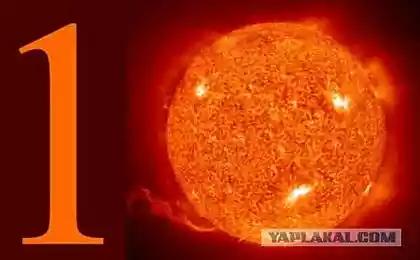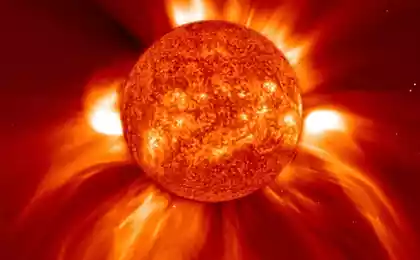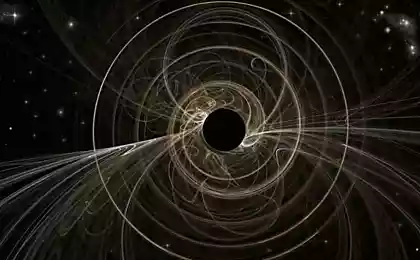639
Emerald sunset is a miracle of physics
You can bet that each of us have repeatedly seen the red sky at sunset. Its characteristic color is due to refraction and scattering of sunlight in the Earth's atmosphere. However, few people ever seen such an amazing sight — green sunset. This natural event can be observed when the horizon is far away and the air is crystal clear. In most cases, the green beam can be seen only for a moment above the water surface of a sea or ocean and only occasionally in the mountains. Its appearance in the middle zone of Ukraine is an exceedingly rare event and is only possible with the perfect mix of a large number of favorable factors. The author of this photo managed to observe and photograph a green beam.
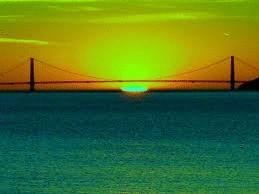
Mostly, the lucky ones who had the opportunity to see the sailors. They believe that his appearance is a good omen, a sign of successful completion of the journey. People believed that anyone who saw the green light — will find their happiness. Bright flashes of blue-green, on the edge of the Sun, leave a lasting impressions and memories for a lifetime.

Skeptics believe green beam imagination or an optical illusion. Some believe that this is the reaction of the human eye, the weary contemplation of the sun. For the latter, the famous popularizer of science Yi Perelman, in his book "Entertaining physics" not only explains in detail the cause of natural phenomena "the green ray", but also cites facts that refute various misconceptions about it. And in a time when photographic technique gives the ability to capture many cases the appearance of the green ray, doubts, it seems, should leave the skeptics.
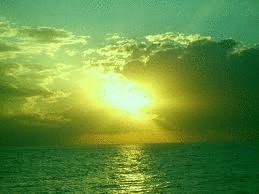
The causes of this extraordinary spectacle is easy to explain based on the knowledge gained in high school. It is known that sunlight consists of a set of electromagnetic waves, each of which has its own rate and length. Wave of a certain frequency is perceived by the human eye as a color: red, orange, yellow, green, blue, Indigo and violet (every hunter wants to know where sits the pheasant). Red has the largest spectrum in this wavelength component of about 0.7-0.6 micrometer. For green and purple wave length is approximately equal to 0.5 and 0.4 micrometers, respectively. Despite these seemingly small differences in wavelength, rays of different colors differently distributed in the substance, in particular have different speeds. The dependence of the speed of light waves in matter of their length or frequency is a manifestation of a more General dependence of the rate of response of the substance at the frequency of oscillation of the electric field in the light wave. In physics this phenomenon is called dispersion. In most substances and environments, including in the earth's atmosphere, red light propagates faster than blue-green. This dependence, called normal dispersion, corresponds to a smaller refractive index for red light than for blue-green. Recall that the refractive index is a measure of how much the speed of light in medium v is less than in vacuum: n = c/v, where C ≈ 3•108 m/s is the speed of light in vacuum.

And if you also know the law of refraction of light, all it simply. According to this law, when oblique light is incident on the boundary of media with different refractive indices the light beam deviates from the original direction of propagation, i.e. is refracted. When you hit the light beam from the area with lower value of n, for example from the vacuum, where n = 1, in a medium with a large value of n the angle of refraction is always smaller than the angle of incidence. Recall that both the angle counted from the normal (perpendicular) to the boundary regions. Since the refractive indices for waves of different lengths are different, the angles of refraction will be different, namely, red light is refracted less than green. This, in particular, is the cause of decomposition of white light into a spectrum when passing through a glass prism. Such a decomposition of the sunlight into a spectrum occurs in the Earth's atmosphere. However, it is observed only in individual cases and in special places. So, when sunset or sunrise, its rays visible to the observer on Earth, the sloping fall from outer space (vacuum). Since the atmospheric density increases when approaching the surface of the Earth, and the refractive index increases. Light, spreading from space to the earth's surface, constantly refracted, and hence decomposes into a spectrum, and, as in a glass prism, the least refracted rays of red light. Although the difference of the refractive indices for red and blue-green light rays in the atmosphere is extremely small, but at large distances (hundreds of kilometers), the effect of separation is quite observable. This is the reason for the appearance of the green beam. Indeed, while the sun really is behind the horizon and its red rays are above the observer, the shorter wavelength green light, rejected is stronger, you see. Of course, blue, Indigo and violet rays, with an even shorter wavelength are refracted much stronger, but to see them is almost impossible: they are very strongly scattered and absorbed in the earth's atmosphere.
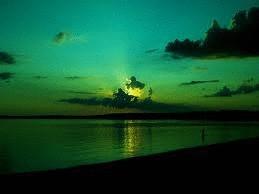
The main obstacle to observation of the green ray scattering on suspended particles of fog, dust, smoke and other terrestrial pollution, but also by inhomogeneities of the atmosphere. In addition, as already mentioned, the path length of sunlight from point of entry into the Earth's atmosphere to the observation point needs to be large enough. All of these conditions are easiest performed when observing sunset or sunrise on the big expanse of water. See the green spot in the desert or in a wooded area almost impossible. Even knowing all the physical reasons and the natural origin of the green beam, it is difficult to get rid of strong emotional impact. So, like sailors and poets, I want to believe that the appearance of this miracle of nature will be a good omen for the country and its people.
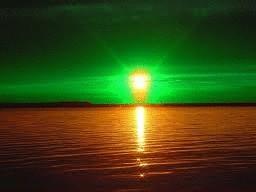
Source: /users/1

Mostly, the lucky ones who had the opportunity to see the sailors. They believe that his appearance is a good omen, a sign of successful completion of the journey. People believed that anyone who saw the green light — will find their happiness. Bright flashes of blue-green, on the edge of the Sun, leave a lasting impressions and memories for a lifetime.

Skeptics believe green beam imagination or an optical illusion. Some believe that this is the reaction of the human eye, the weary contemplation of the sun. For the latter, the famous popularizer of science Yi Perelman, in his book "Entertaining physics" not only explains in detail the cause of natural phenomena "the green ray", but also cites facts that refute various misconceptions about it. And in a time when photographic technique gives the ability to capture many cases the appearance of the green ray, doubts, it seems, should leave the skeptics.

The causes of this extraordinary spectacle is easy to explain based on the knowledge gained in high school. It is known that sunlight consists of a set of electromagnetic waves, each of which has its own rate and length. Wave of a certain frequency is perceived by the human eye as a color: red, orange, yellow, green, blue, Indigo and violet (every hunter wants to know where sits the pheasant). Red has the largest spectrum in this wavelength component of about 0.7-0.6 micrometer. For green and purple wave length is approximately equal to 0.5 and 0.4 micrometers, respectively. Despite these seemingly small differences in wavelength, rays of different colors differently distributed in the substance, in particular have different speeds. The dependence of the speed of light waves in matter of their length or frequency is a manifestation of a more General dependence of the rate of response of the substance at the frequency of oscillation of the electric field in the light wave. In physics this phenomenon is called dispersion. In most substances and environments, including in the earth's atmosphere, red light propagates faster than blue-green. This dependence, called normal dispersion, corresponds to a smaller refractive index for red light than for blue-green. Recall that the refractive index is a measure of how much the speed of light in medium v is less than in vacuum: n = c/v, where C ≈ 3•108 m/s is the speed of light in vacuum.

And if you also know the law of refraction of light, all it simply. According to this law, when oblique light is incident on the boundary of media with different refractive indices the light beam deviates from the original direction of propagation, i.e. is refracted. When you hit the light beam from the area with lower value of n, for example from the vacuum, where n = 1, in a medium with a large value of n the angle of refraction is always smaller than the angle of incidence. Recall that both the angle counted from the normal (perpendicular) to the boundary regions. Since the refractive indices for waves of different lengths are different, the angles of refraction will be different, namely, red light is refracted less than green. This, in particular, is the cause of decomposition of white light into a spectrum when passing through a glass prism. Such a decomposition of the sunlight into a spectrum occurs in the Earth's atmosphere. However, it is observed only in individual cases and in special places. So, when sunset or sunrise, its rays visible to the observer on Earth, the sloping fall from outer space (vacuum). Since the atmospheric density increases when approaching the surface of the Earth, and the refractive index increases. Light, spreading from space to the earth's surface, constantly refracted, and hence decomposes into a spectrum, and, as in a glass prism, the least refracted rays of red light. Although the difference of the refractive indices for red and blue-green light rays in the atmosphere is extremely small, but at large distances (hundreds of kilometers), the effect of separation is quite observable. This is the reason for the appearance of the green beam. Indeed, while the sun really is behind the horizon and its red rays are above the observer, the shorter wavelength green light, rejected is stronger, you see. Of course, blue, Indigo and violet rays, with an even shorter wavelength are refracted much stronger, but to see them is almost impossible: they are very strongly scattered and absorbed in the earth's atmosphere.

The main obstacle to observation of the green ray scattering on suspended particles of fog, dust, smoke and other terrestrial pollution, but also by inhomogeneities of the atmosphere. In addition, as already mentioned, the path length of sunlight from point of entry into the Earth's atmosphere to the observation point needs to be large enough. All of these conditions are easiest performed when observing sunset or sunrise on the big expanse of water. See the green spot in the desert or in a wooded area almost impossible. Even knowing all the physical reasons and the natural origin of the green beam, it is difficult to get rid of strong emotional impact. So, like sailors and poets, I want to believe that the appearance of this miracle of nature will be a good omen for the country and its people.

Source: /users/1

